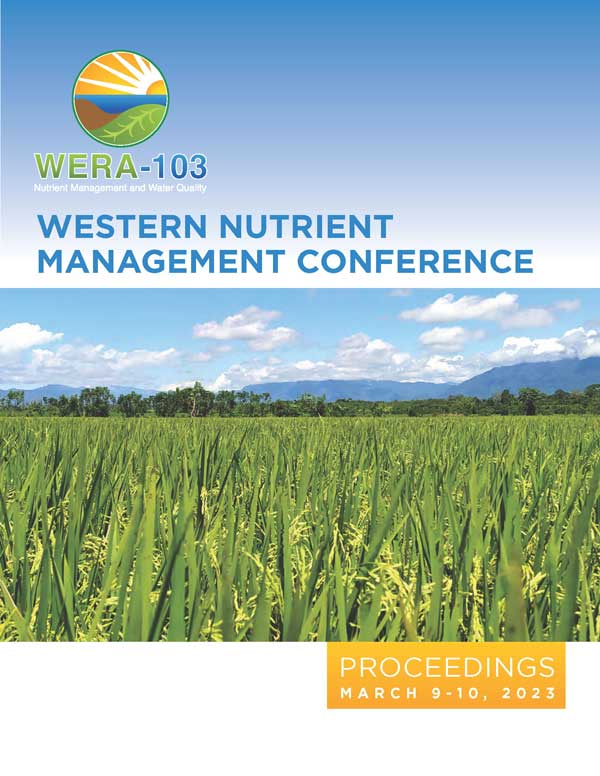Download the Conference Proceedings
Proceedings
Topics
| Filter results5 paper(s) found. |
|---|
1. Development of a Constrained Resource Model to Support Intercropping DecisionsCrop producers are interested in intercropping due to its’ potential to increase profitability, yield stability and sustainability. Our objective was to extend a simulation model to forecast crop yields (PRS® CropCaster®) to pulse-oilseed intercrops. This tool would provide crop producers with forecasts of yields of each crop component under different management and environmental conditions. Based on competition for fertilizer 15... E. Bremer, I. Madsen, K. Greer |
2. Monitoring Soil Nitrate to Estimate Cover Crop N Contribution in Organic Vegetable Production FieldsOrganic vegetable growers rely on legume cover crops as an economical source of plant-available N. This research evaluated N contributions to summer vegetable crops by cover crops (CC) residues by monitoring soil nitrate (NO3-N) concentrations during the summer crop growing season. Replicated field plots were established with three CC mixes: solo common vetch (V), phacelia + V (PV), and cereal rye + V (RV), plus a winter fallow (F) control in grower fields in the north Willamette V... D. Sullivan, N. Andrews |
3. Nitrogen Management to Increase Cotton Production in Conservation Cropping SystemsThe use of conservation management practices, like cover crops and no-tillage, is common in semi-arid cropping systems to reduce wind erosion. However, the use of these practices can also reduce cotton lint yield. The purpose of this study was to determine the impact of nitrogen (N) management in conservation cropping systems to increase cotton lint yield. Two experiments were conducted at the Agricultural Complex for Advanced Research and Extension Systems in Lamesa, TX, USA. The first exper... J.A. Burke, K.L. Lewis, J.L. Foster-malone |
4. Effects of Long-term Biosolids Applications in Two Dryland Agroecosystems on Physical, Biological, and Chemical Soil Health PropertiesBiosolids can be important sources of organic matter to semi-arid dryland grain systems and have the potential to mitigate some of the soil health challenges specific to these areas while providing an alternative to synthetic fertilizers. Biosolids are an important avenue for beneficially reusing and redistributing nutrients from high population urban areas to more rural agricultural areas. We explored how long-term (20+ year) applications of biosolids at two field sites affected physical, bi... M. Desjardins, A. Bary, J. Ippolito, S. Cappellazzi, D. Liptzin, D. Griffin-lahue |
5. Soil Greenhouse Gas Dynamics in Response to Dairy Manure Compost in an Almond OrchardApplication of dairy manure compost in soils under almond production may confer benefits such as increased carbon sequestration, improved crop nutrient use efficiency, and reduction of greenhouse gas emissions. Elucidating the mechanisms of greenhouse gas emissions and mitigation is a primary concern in the management of agricultural soils and it is directly linked to nutrient management. Presently, agricultural soils account for 11.2% of U.S. greenhouse gas emissions. Of particular concern i... A. Coyotl, J. Murch, S.S. Khalsa, W.R. Horwath |
